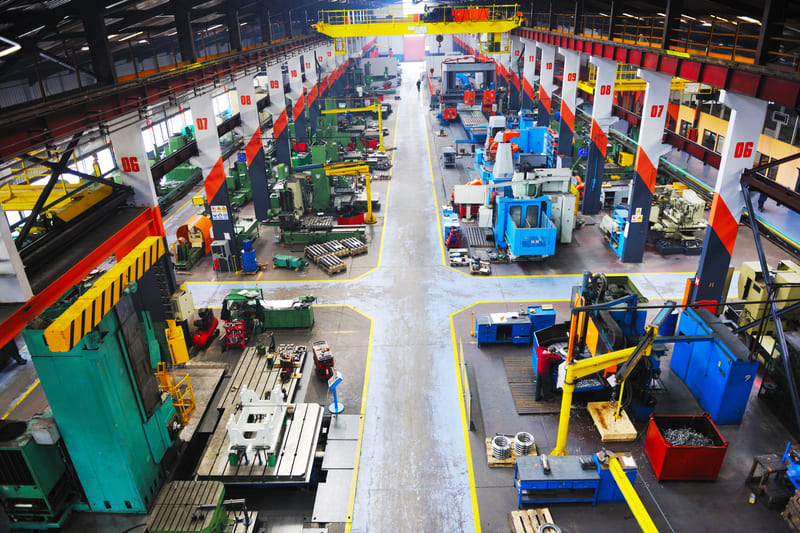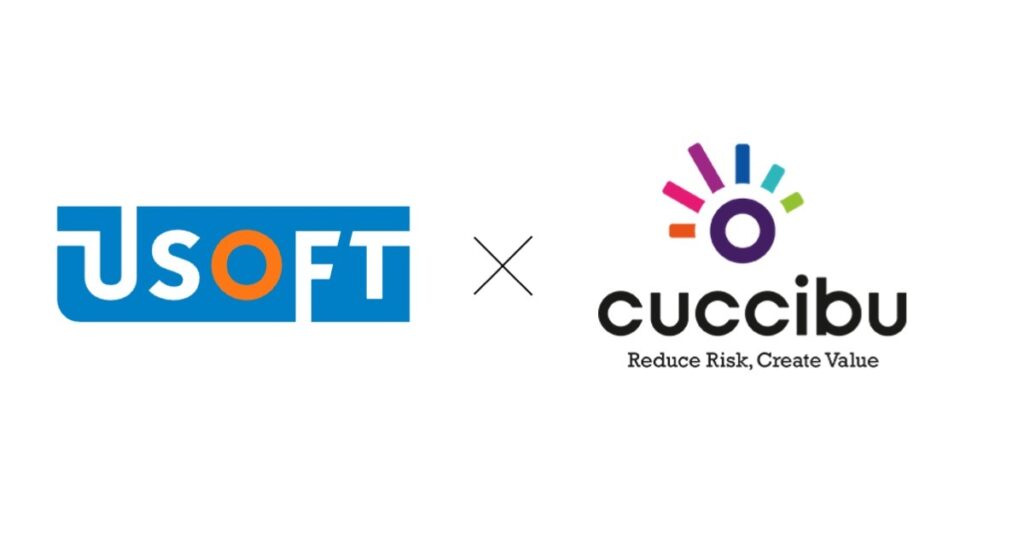Manufacturing is changing. This is nothing new, of course – people have always worked to improve methods of production and key value chain processes. First with better tools and materials, followed by mechanized production, and then through process optimization and mass-production techniques. Each stage has led to increased output and increased ability to meet market demands.
However, the big difference today is that the winning advantage is no longer gained from improvements in the physical processes or tools we use. It’s the digital domain that holds the power to ‘make or break’.
The future of manufacturers depends upon their strategic application of IT to support and integrate data flows, sophisticated analytics, automated design, optimized planning, and real-time process orchestration and decision-making.
With Industry 4.0 already an emerging reality, this blog outlines the greatest IT challenges for manufacturers today, with clear advice for how they can level-up their capabilities today and achieve digital success tomorrow.
The changing face of manufacturing
After a contraction in 2023, growth is returning to the manufacturing industry. Value-added growth is expected to resume at 1.15% CAGR globally in the next five years. Some businesses will fare better than others, and technological excellence will be a deciding factor.
The fourth industrial revolution (a.k.a. Industry 4.0) is already well underway, and it’s driving rapid changes in numerous adjacent sectors too. This includes manufacturing, where it is spurring a reinvention of the sector (Manufacturing 2.0) and the emergence of smart factories.
Even when new advanced processes or tools emerge, they increasingly require advanced IT capabilities to use them successfully.
Therefore, the most successful manufacturing businesses in the Industry 4.0 era will be those that can rapidly evolve their IT infrastructure and adopt innovations, so they can support the evolving requirements of smart manufacturing and all the benefits it can bring.
Evolutionary forces at work
Manufacturing all began with human hands. Indeed, there is no tool or machine that currently matches the remarkable versatility of our own hands. Human hands can be gentle and precise, hold objects of any shape, and exert forces in a wide variety of ways. For this reason, many high-tech processes still rely on their deftness, accuracy, and range.
Yet, what distinguishes them is not the shape or design of these ‘basic’ tools – after all, almost every mammal has them, and so do some robots.
What makes human hands substantively different to those of chimpanzees (or robots) is the intelligence controlling them. It’s this intelligence that spurred the beginnings of manufacturing as we know it, and it’s the integration of intelligence that will continue to drive its progress into the future, as we embrace the benefits of Industry 4.0.
Similarly, manufacturers must be capable of integrating intelligence if they want to evolve and survive. They must have the ability to adapt and work with extensive automation – and your IT must support this.
While the capability of your IT infrastructure is a necessary condition for success, it’s also not sufficient on its own.
Advanced IT capabilities must also be integrated properly with your physical infrastructure, and supported by new behaviors to ensure it is wielded effectively and securely. When all these elements work together, you have the foundation of a smart factory.
When properly implemented, IT can solve the issue of ever-increasing data complexity. With new technologies, systems, processes, and partnerships comes a growing volume of data, and this far exceeds the human capacity to comprehend it.
The time is right for software to take on the role of turning these roaring rivers of data into intelligent, precisely targeted actions and processes.
What does a Smart Factory require?
Smart manufacturing solves numerous problems by automating and optimizing numerous aspects of the production process, including supply chain and logistics. All parts are integrated into a single system that keeps everything running smoothly, without any human intervention or human intervention when absolutely critical.
There are already successful examples of smart factories in use by manufacturing leaders. Following the successes of companies like Bosch, LG, Tesla, and Infineon, 97% of manufacturers intend to implement smart manufacturing techniques in the near future. Those who do so first, stand to gain the greatest market advantage from these technologies.
Manufacturers are rightly cautious about making investments in technology, and when they do, they want to be sure of a substantial return on investment. As there are many possible components in a smart factory, this can make it seem like a daunting prospect.
However, the good news is that you don’t have to do it all on one ‘big bang’. Instead, there’s a strategic benefit to focusing on becoming a ‘smarter factory’ as a primary objective.
After all, your factory may not need to benefit from all the features of smart manufacturing straight away, but must be able to implement new technologies and benefit from them fast when the time is right.
The key to this is digital agility. Success is achieved by using an IT infrastructure that can adapt to new needs and integrate the various technologies required for smart manufacturing, as needed. This allows you to build up smart manufacturing capabilities incrementally on a foundation that can support continued evolution and innovation.

The many moving parts of smart manufacturing
- IoT – The Internet of Things (IoT) allows devices to send data across the internet, allowing multiple information to flow from myriad devices and locations. These may include 5G connections or Wi-Fi to enable data transfers.
- Sensors – a variety of sensors collect information about production processes, inventory, and more. Sensors can provide data for machine vision, be used to detect defects or tool performance, and ensure safety.
- Cloud infrastructure – to accommodate the required agility and scalability of smart facilities, cloud computing is relied on to handle the variable and complex data streams and events involved.
- Data – Massive amounts of data are the key to smart manufacturing, and this must be adequately integrated, analyzed, and processed. This comes from sensors, IoT, software, cameras, stakeholders or customers, and many more sources.
- Robotics – Robots and Cobots will continue to grow in importance, with AI helping to guide more efficient and safer production for both fully-automated and collaborative settings.
- Digital Twins – The ability to create digital versions of factories and supply chains helps to identify and visualize process bottlenecks, model new processes, and increase operating efficiencies.
- Metaverse – Immersive 3D environments are valuable for remote diagnostics and accelerated training, as well as visualizing Digital Twins or advanced production processes.
- IAVs – Intelligent Autonomous Vehicles (IAVs) and other autonomous material handling equipment (MHE) can move materials and finished products to where they need to go without supervision.
- AI and smart algorithms – As more processes become fully automated and data-driven, intelligent algorithms and other AI play a chief role as orchestrators of the smart factory.
- Autonomous supply management – Suppliers will become more efficiently managed due to predictive analytics and responsive supply chains. Lead times, MOQs, production schedules and other factors will all be used by intelligent algorithms. These ensure that the right materials are in the right place when needed.
What IT infrastructure is needed to support smart manufacturing?
To handle the physical requirements of smart manufacturing, businesses need to ensure that their IT infrastructure can handle them.
Many manufacturers will need to make significant gains in their digitization strategy before they can meet these requirements, and this can be seen as an opportunity to do it the right way, with clear objectives.
Data handling capabilities
Sensors and IoT produce streamed data in significant volumes. Data streams require a distinct architecture for handling, analyzing, and storage. In addition, the key challenge is to abstract the right information from these data flows, and to do this in real-time. For example, a data trigger that might indicate a mechanical fault, should be instantly processed as a priority, because it might cause disruption to a key process. Then it can take the prescribed measures to mitigate the risk in a timely manner.
Data integration
Data will flow from a variety of sources: IoT devices, strategic partners, open-source data, and market intelligence. Integrating all these different data formats, schema, and unifying them into a single system is essential, but also a challenge. APIs and other connectors play a role, as do analytics streams. These extract, summarize, and convert data into suitable formats.
Analytics
Data analytics is essential for driving decisions in autonomous production, as well as informing human decision-makers. Advanced analytical capabilities are needed to transform complex data sources, capture insights from streamed data, analyze historical data, and determine real-time performance.
Intelligence
To drive greater efficiencies, intelligent algorithms are needed to optimize and orchestrate processes. These algorithms can include AI that determines predictive maintenance regimes, algorithms that predict demand, and Intelligent Process Orchestration (IPO) that can manage one or multiple facilities without human intervention. IPO is used to automate event-driven processes in some of the world’s most complex facilities.
Control software
Individual devices and machines all come with their own software for control. Integrating these seamlessly into your data streams, analytics, and process orchestration is key.
Business rules-based software
Your business rules already exist, even if you don’t realize it. These are the criteria for each decision or process, expressed as plain-language rules. To accurately mirror your business, intelligent software must be based on business rules, because these form the ‘intelligent DNA’ of your organization. This approach also gives you the flexibility to adapt processes and adopt new technologies in an agile way, without losing any of your unique advantages.
Cyber security
Increased reliance on IT means your cyber security must be top-level. Reliable and secure software must be supported by rigorous security protocols, staff training, and advanced cyber security solutions that protect your digital assets.
Scalability and performance
Your IT infrastructure must support high data volumes, incredibly complex processes, and variable demand. Cloud computing can offer scalability, but your software solutions themselves must also be able to excel, even when under pressure. High performance is a must.
Is your ERP a constraint for Industry 4.0?
Core systems, such as your ERP, MRP or MES, are trusted, reliable, and they work. It’s understandable that many organizations delay replacing their current systems – even when they fall into the ‘legacy’ category.
The problem is that legacy systems come with a growing maintenance burden. This further is compounded by a chronic shortage in legacy coding expertise, and the inability to adapt to new functionalities, data sources, or processes.
Even when your core software isn’t ‘legacy’, it may still struggle to meet the growing needs of modern manufacturing. Furthermore, a heavily customized ERP cannot be updated without huge effort, and can become more of a risk than an asset.
However, while your ERP may be a constraint on the progress of your IT evolution, it doesn’t make any sense to ‘throw out the baby with the bathwater’, or to waste time redeveloping functionality you already have from your ERP.
You may decide to replace your core or legacy software one day, but there’s no need to rush the process.
It makes much more sense to build the additional capabilities you need with low-code, and use these to complement the functionalities that your ERP already excels in. By building intelligent add-ons to your core software, you can extend functionality without customizing the ERP itself. This makes sure it better fits your business needs and can help your organization adapt to new market realities and demands.
Preparing for continuous innovation: steps to take
The IT challenges for the manufacturing industry are clear: businesses must build an adaptable foundation for innovation that allows the implementation of new technologies in a modular and agile way.
The first step is to create a digital mirror of your business, by extracting its business rules. This is easily achieved by using a business rules management solution like Studio.
Then, once you have extracted the intelligent DNA of your organization, you can start to build software based on it, to meet clear objectives and business priorities.
A suitable application development platform can enable this, provided it offers low-code in combination with high performance and reliability. Furthermore, with this approach, you can continue to make innovations and implement new technologies in a highly scalable and efficient way.
Want to learn more about how manufacturers can keep pace with growing demands? Read more here.





